Shoppers are becoming an increasingly digital-savvy breed. Time is precious and many consumers don’t want to waste theirs trying to decipher which product out of many perfectly matches their needs. They expect a seamless path from idea to purchase and today’s brands are all too eager to oblige. A coherent omnichannel presence? Check. Online customer service to match offline? Check. Intuitive technology to aid decision making? Umm, check?
One area you might think of as an exception to the rule is cosmetics. Beauty products are tactile by nature; customers are used to trying them out in person, seeing what they look like in real life, and having their questions answered by in-store seasoned experts. But the tides are turning.
According to a report by L2, e-commerce sales for beauty products are on the up. Consumers no longer just replenish familiar items but are starting to learn about – and most crucially buy – unfamiliar products. The report cites Guided selling as a useful way to facilitate discovery and purchase.
Look at any major beauty or skincare brand – from premium brands like Chanel and Christian Dior to everyday names such as Rimmel London and No7 – and you’ll likely notice they’re using some form of Guided selling. Across the board, beauty brands are utilizing Guided selling tools to convert researchers to purchasers.
And it’s working; Nielsen data revealed US consumer shopping trips for beauty products online rose 15.4% year over year in June 2014 compared with a decline of 2% for the industry as a whole. The upshot? Get on board now to remain relevant to beauty lovers of the future.
In this article, we take a look at how leading cosmetic brands are approaching digital beauty consultations.
1. Personalization – Skin diagnostic tools
Part of the appeal of actually going to a store to purchase skincare is being able to chat through your skin concerns with an expert and receive their personalized recommendations.
This experience is now being transferred to the online realm via a host of different skin diagnostic tools that offer analysis from the comfort of home. We decided to put a few different tools to the test to see how well they performed.
Vichy
Ideal skin diagnosis by Vichy. This involves uploading a picture, filling in a questionnaire, playing with filters to achieve your perfect skin, picking your skin priorities, and receiving a set of personal recommendations.
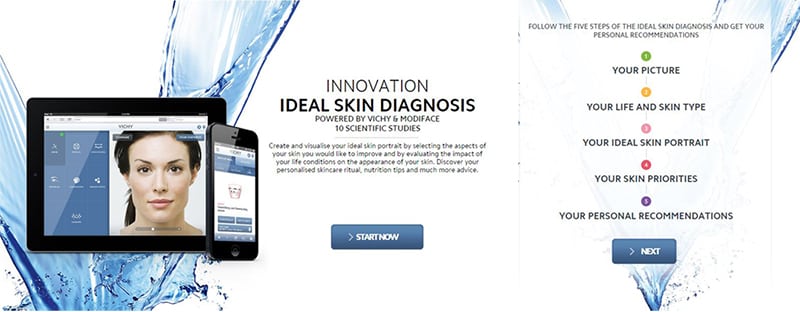
Allowing consumers to alter their skin digitally to achieve their version of perfection certainly plays well to Millennials who are well known for their love of Instagram filters (guilty as charged). But I wasn’t overly impressed with the capabilities of the filters; they barely made any difference at all.
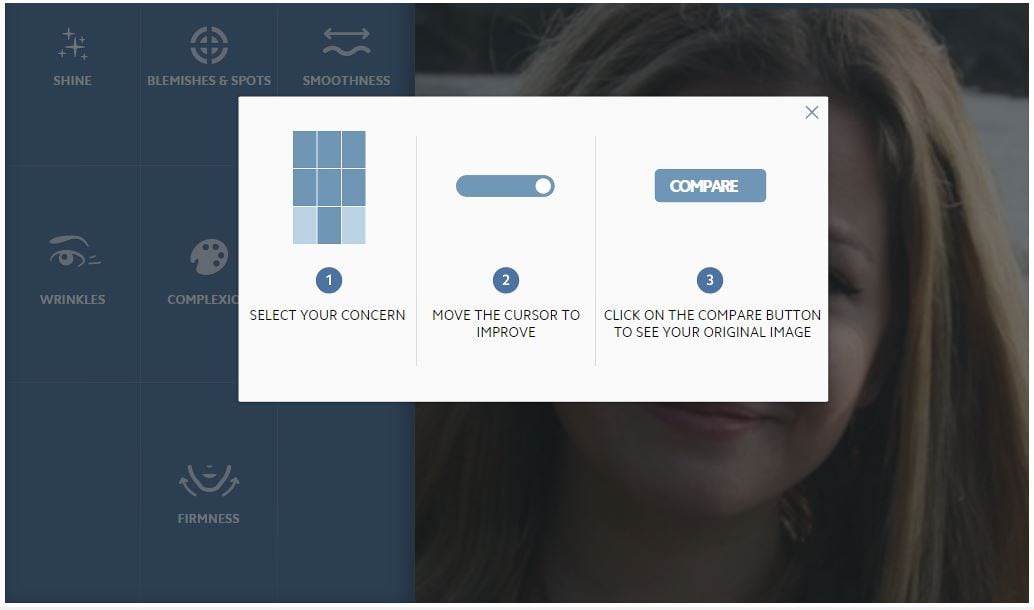
After altering your face the software preselects skin priorities, which the consumers can alter, and suggests a skincare ritual as well as advice pertaining to the lifestyle section.
Neither were particularly ground-breaking for experts (cleanse, use a serum and finish with moisturizer ) though they can be very useful to consumers new to skincare products in general or the brand’s product range.
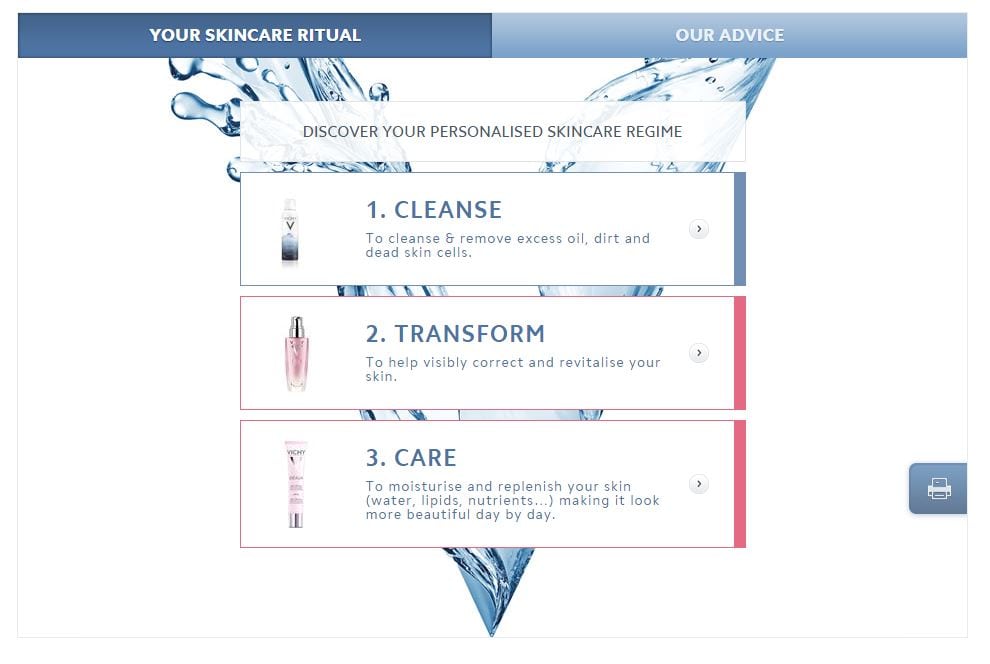
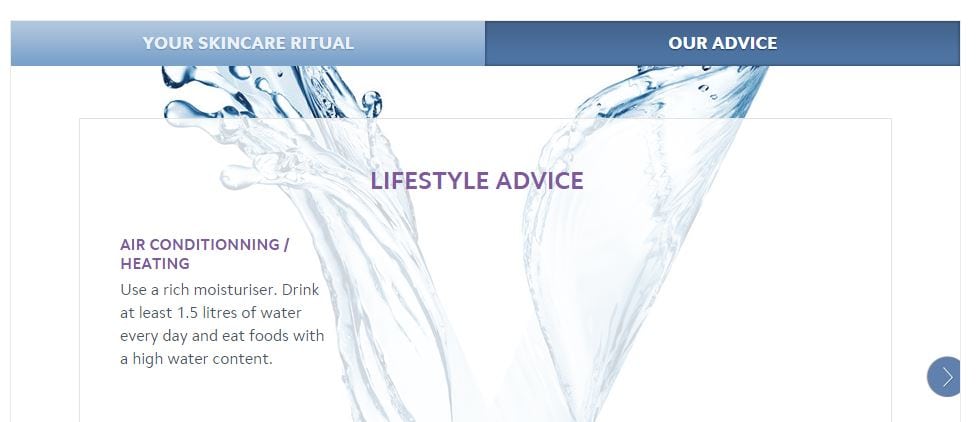
Once the user clicks on a suggested skin care tip, the skincare advisor displays a product recommendation with the option to view the product in the online store or locate the nearest Vichy store.
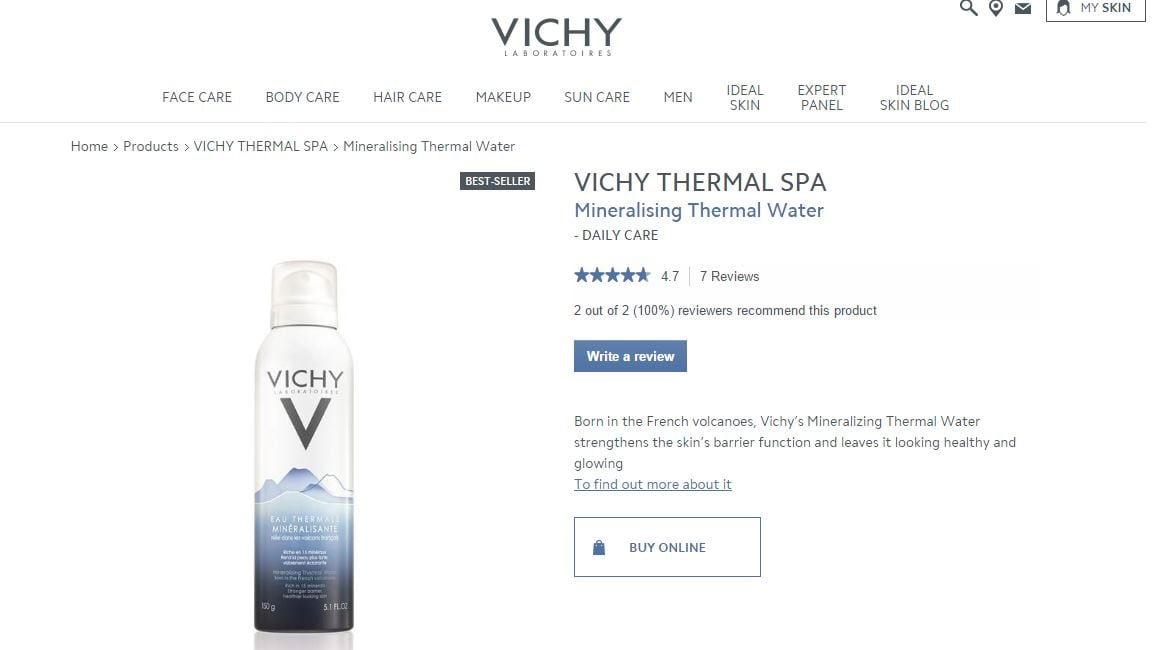
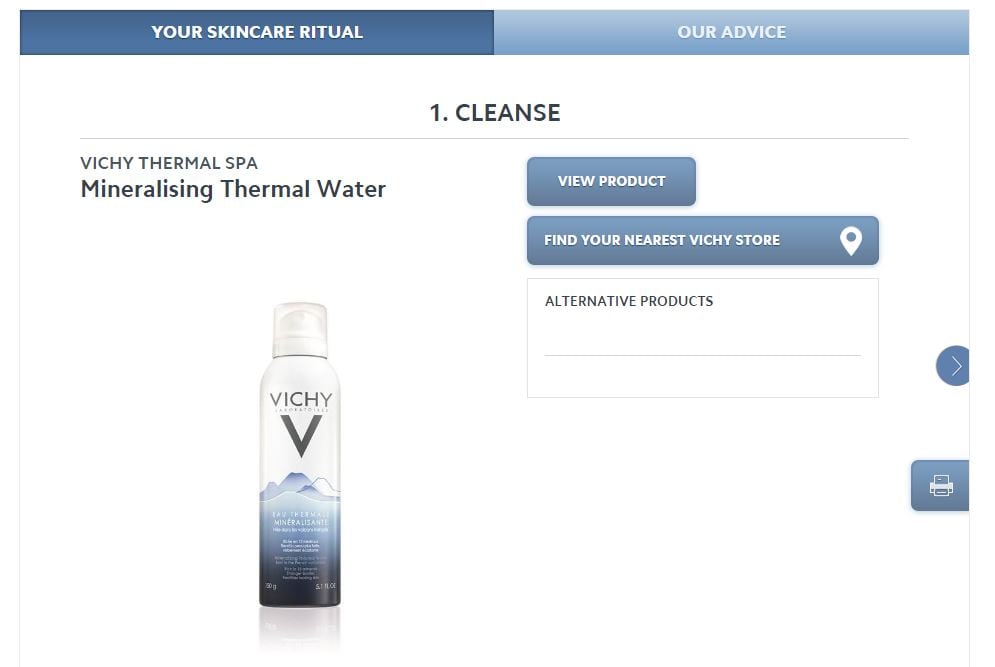
The advisor only recommended one product for each skincare tip. While limiting choice to avoid overwhelming the customer is appreciated, suggesting two or three different product options and explaining the individual benefits would have made for a more complete experience.
The Body Shop
Next, I tried the skincare routine advisor by The Body Shop. This didn’t involve uploading a photograph; instead, it was a fairly in-depth questionnaire, with an express option for consumers who can’t spare four minutes.
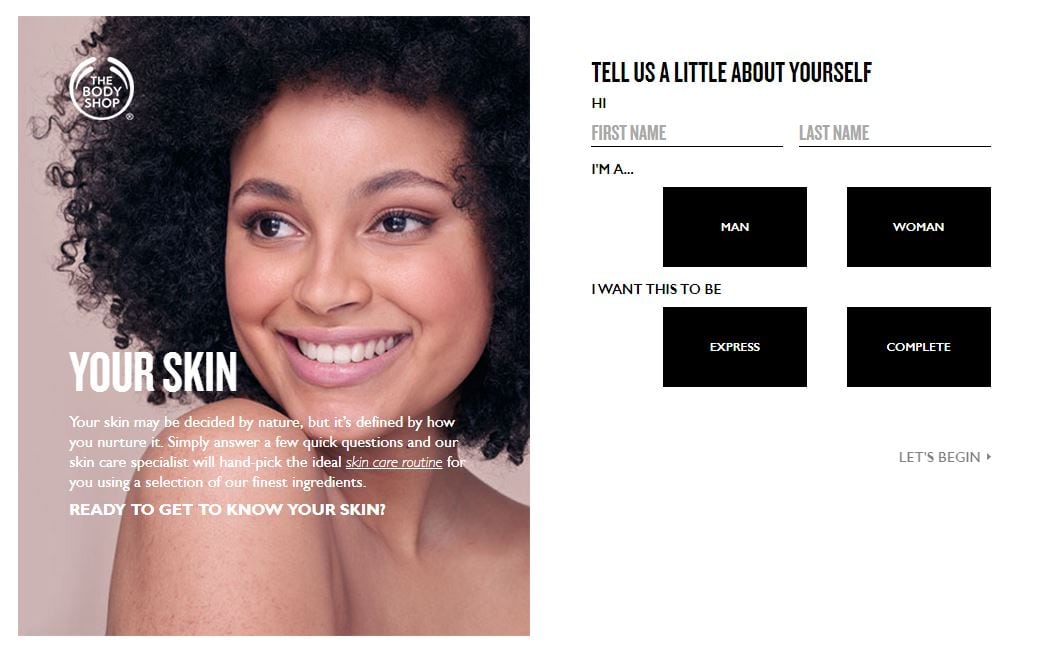
From a branding point of view, The Body Shop does a great job. Seemingly small things like wording questions in a friendly manner akin to an actual sales advisor help this feel like a more personal process.
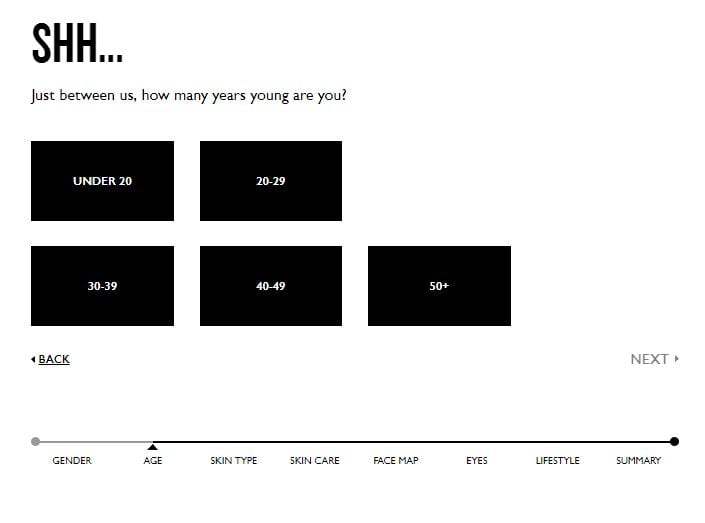
The suggested product selection contained three different targeted treatments. Each was perfectly matched to the skincare concern I had highlighted, which also made the process feel more ‘real’.
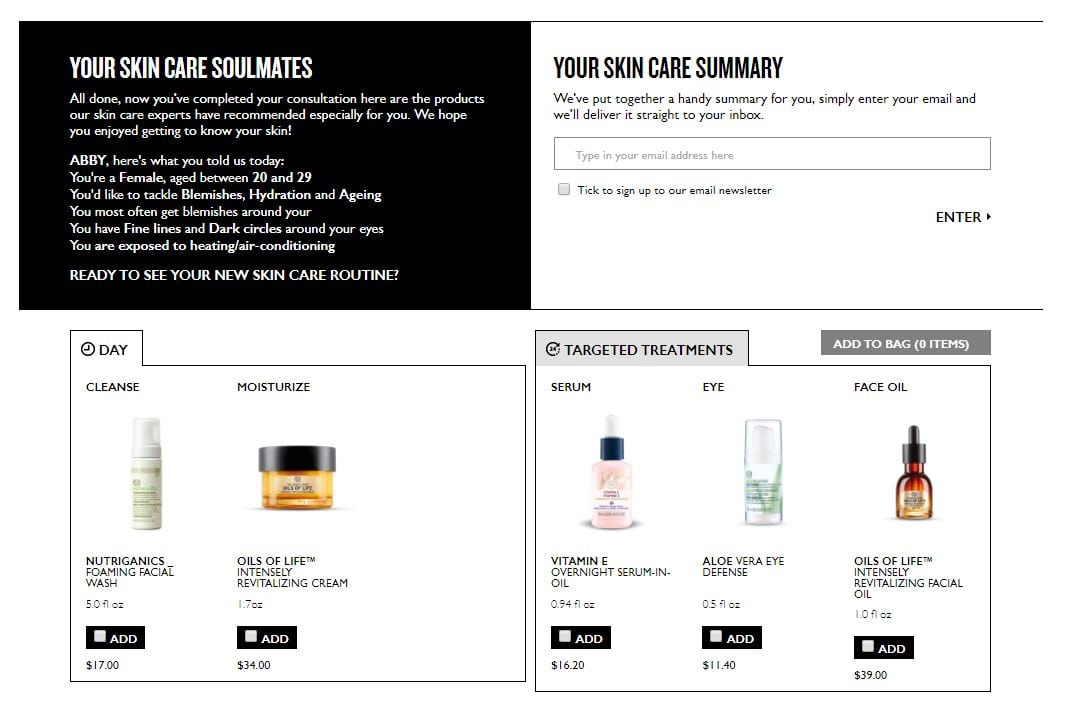
The Bodyshop’s advisor is very useful for consumers who are just starting out with skincare or want to explore the company’s product range in a seamless way.
One of the glaring problems is that very rarely do people use one product for their entire skincare needs. By focusing on specific consumer concerns and matching them to targeted treatments, instead of overwhelming shoppers with the entire range, brands can do a much better job at creating loyal, educated customers.
2. Need to test – Virtual mirrors
Make-up seems like a product that consumers would absolutely want to try before they buy.
However, with the increasing number of blogs, YouTube, forums and even on-site reviews, this need is becoming less crucial as consumers can see how the product looks and wears on others.
L’Oréal
Although relevant, reviews don’t always make up for not being able to see how a product would look on the consumer’s own face. L’Oréal wanted to change that by creating Make-Up Genius – an iOS app that allows users to scan their face and virtually apply make-up from their catalog — essentially trying before they buy.
It certainly proved popular and held the no. 1 spot in the app store’s lifestyle category for four weeks after its launch.
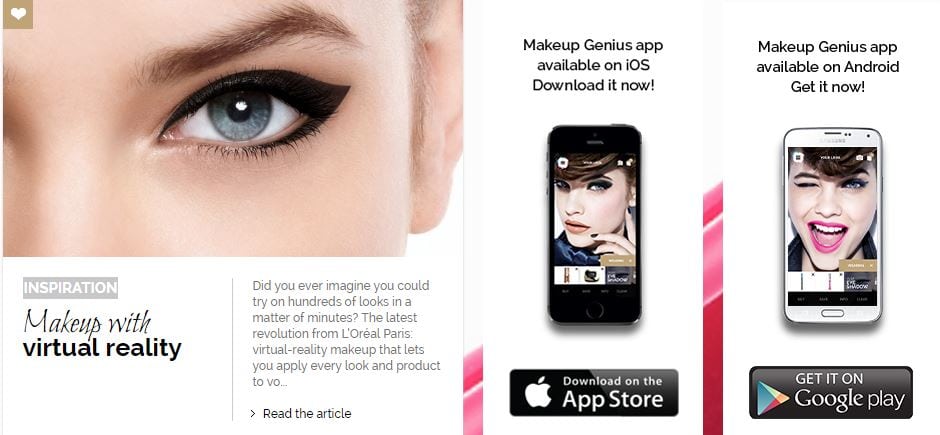
Users can use their smartphone as a mirror to see how the makeup would look on them. However, a note on the iTunes app page saying (most probably due to legal reasons): “This app is designed for illustrative purposes only and is not designed to be an accurate representation of what the selected cosmetics products will look like on the user,” seems to somewhat miss the point. Users also seem unsure whether this is a serious app.

When there are too many choices that finding the right product is difficult and there are no in-store personnel available to ask for advice, an AR app like L’Oréal’s Make-Up Genius certainly is an innovative and helpful approach. It gives shoppers an idea of how different products would look on them to increase their decision confidence before making a purchase.
3. Seamless product discovery – Digital assistants
Product choice can be overwhelming and lead to consumer analysis paralysis.
Digital assistants help brands combat that negative effect by offering up sensible, useful product suggestions based on the consumer’s personal needs.
Victoria’s Secret
Victoria’s Secret Find Your Fragrance Quiz aims to do just that.
Would-be perfume purchasers are led through a series of questions that range from the practical (which is your favorite scent?) to more whimsical (which words do you live by?).
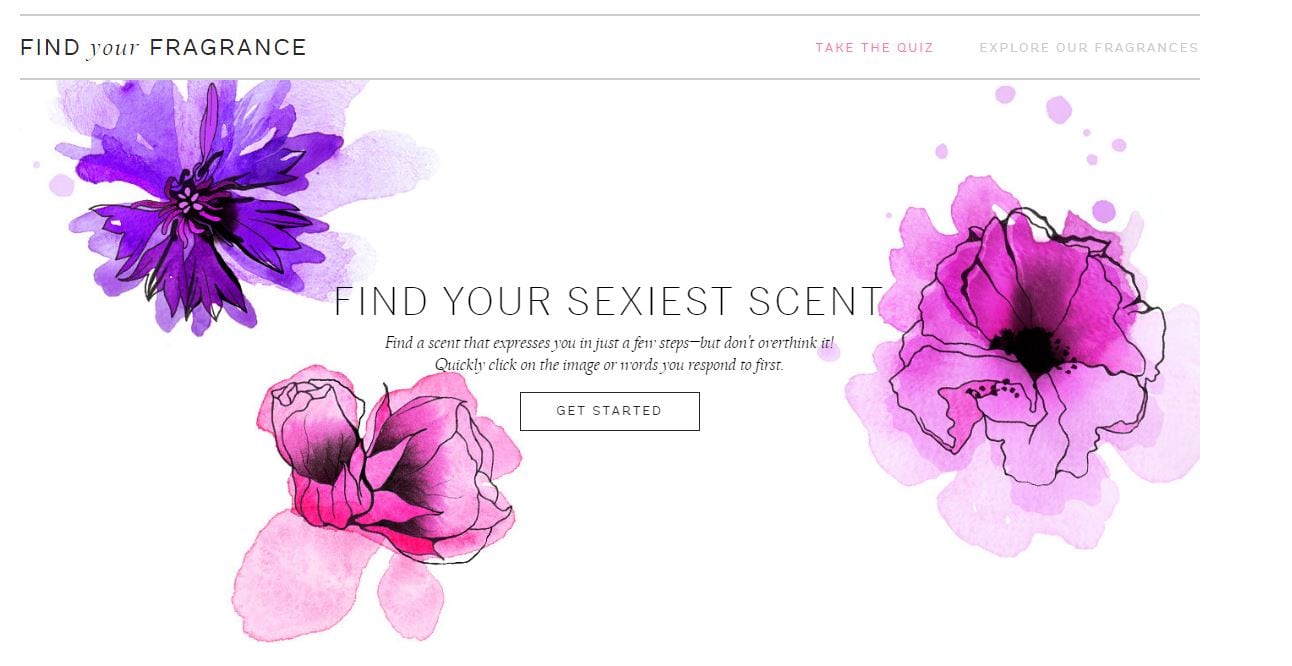
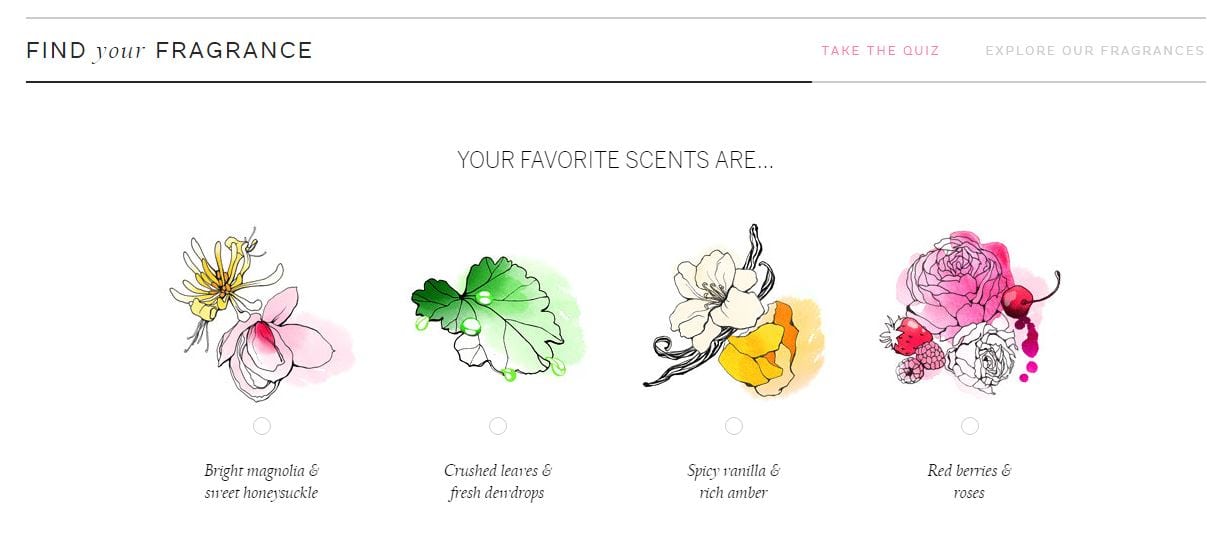

After answering the questions, users are presented with one main product recommendation as well as three alternatives to consider.
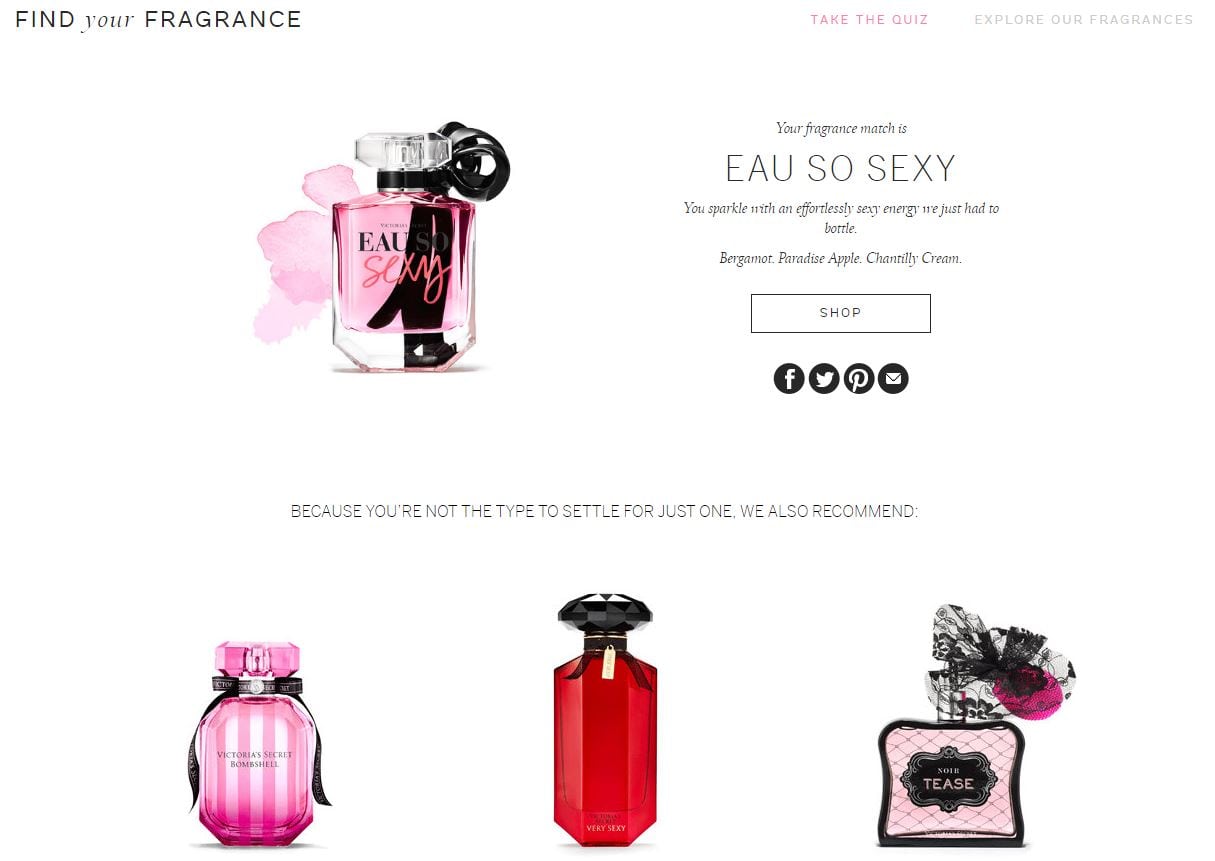
Despite indicating that blue was my favorite color and orchid my favorite scent, I was matched with a pink perfume absent of any orchid notes. The quiz was suitably fun, but the recommendations didn’t seem accurate and convincing.
L’Oréal
Next up, I trailed the L’Oréal Hair Care Consultation tool.
It asked about texture, condition, and thickness before finding out the user’s primary hair concerns, current routine and salon visit frequency.
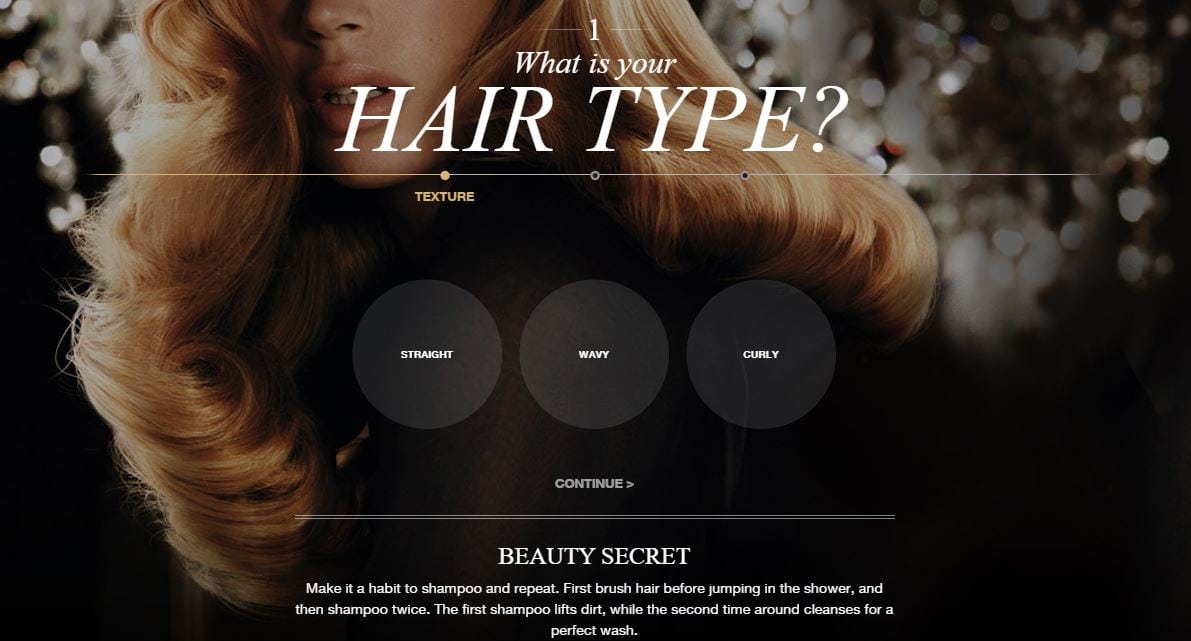
Upon completion, I was matched with three highly relevant products and given a $2 coupon for hair care products. This was the first time in my testing that I was very impressed and would have considered purchasing a product (if I was in need of one). The coupon was an especially nice touch.
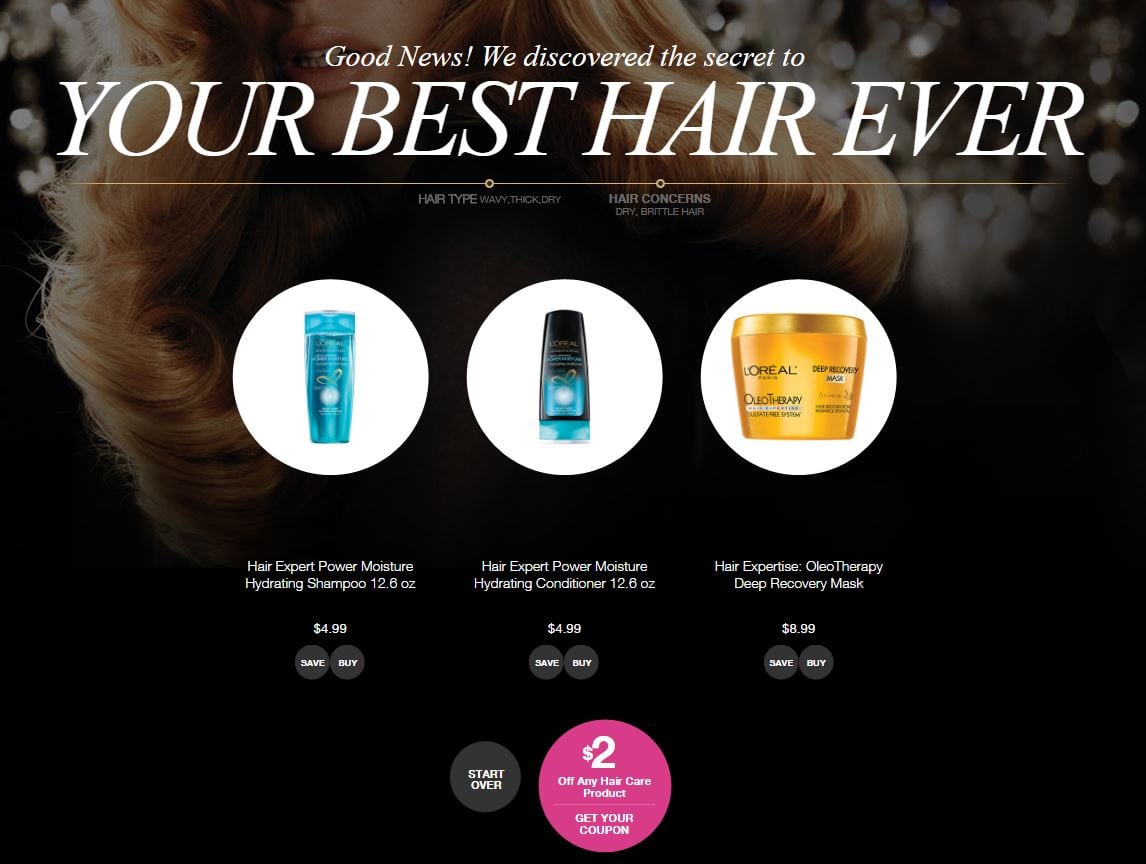
Digital assistants certainly have the potential to convince shoppers and turn them into customers. However, the most crucial aspects are relevance, accuracy, and trustworthiness. The user must be able to understand why products have been recommended and how they fulfill their specific needs.
4. In-store technologies
What about combining the best of old-school offline features with the innovative new technology on offer?
Sephora
That’s what the good people at Sephora have decided to do! Last year, they opened their most “digitally enabled” store in San Francisco.
Customers can use one of 12 work stations to take a makeup class taught by experienced associates and supported via video tutorials. They can also browse the digital beauty board which showcases the best user-generated content and allows them to filter images for their skin tone, type, and color.

While it might be costly to roll out across all Sephora stores, elements of it could certainly be replicated. For example, the Sephora app could recognize when a user is in store (using beacon technology) and provide them with an in-store map, daily promotions, and the customer’s online wish list. How’s that for integration?
Conclusion
Despite all the current advancements, digital technology in beauty is still in the very early stages. The technology I trialed certainly confirmed this for me; while it was a fun novelty it didn’t feel robust and reliable enough yet. But that will change.
As consumers continue to embrace technology in all areas of their lives, the boundaries between the virtual and real-world will increasingly blur. Beauty and skincare brands will need to put technology at the center of their strategy making it an intrinsic part of the product if they want to stay relevant.


